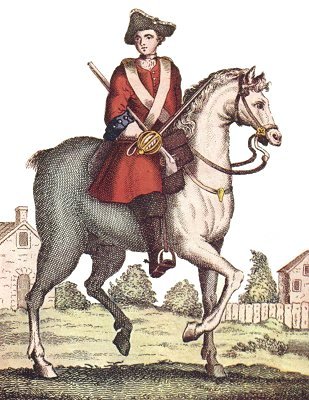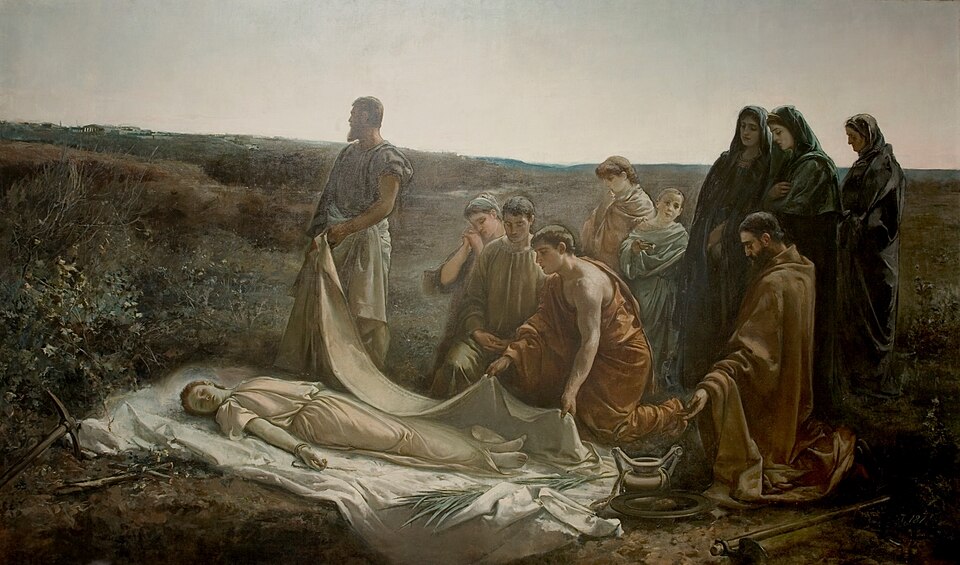
In 1691, on learning that her missing husband was serving in the British Army in Holland, Irish publican Christian Cavanagh disguised herself as a man to go after him. Wounded and captured at the Battle of Landen, she was exchanged back into service, killed another soldier in a duel, was discharged, re-enlisted as a dragoon, and fought with the Scots Greys in the War of the Spanish Succession, all while persuading her fellow soldiers that she was a man.
Author Marian Broderick writes, “[S]he ate with them, drank with them, slept with them, played cards with them, even urinated alongside them by using what she describes as a ‘silver tube with leather straps’. No one was ever the wiser.”
After the Battle of Blenheim she discovered her husband with another woman and decided to remain a dragoon rather than rejoin him. A surgeon finally discovered her secret in 1706, when her skull was fractured in the Battle of Ramillies. Discharged, she served the unit as a sutler until 1712. Hearing the remarkable tale, Queen Anne granted her a bounty of £50 and a shilling a day for the rest of her life.

